This post was last updated in August 2025.

August 1 is National Minority Organ Donor Awareness Day, which kicks off National Minority Donor Awareness Month (NMDAM).
In this post, you’ll learn the story behind NMDAM, why we celebrate, and why minority organ donor awareness is important.

What is the goal of National Minority Donor Awareness Month (NMDAM)?
The goals of NMDAM include:
-To create a positive, supportive culture around organ, eye, and tissue donation
-To save and improve lives across diverse transplant communities
-To inspire individuals to register as organ donors
-To reduce the need for transplants as much as possible by promoting healthy living
What is the theme of National Minority Donor Awareness Month (NMDAM)?
Donate Life America promotes an annual NMDAM theme of “One Voice, One Vision.”
The theme represents the capacity for both individuals and organizations to pledge their voices to a brighter future for multicultural transplant communities.
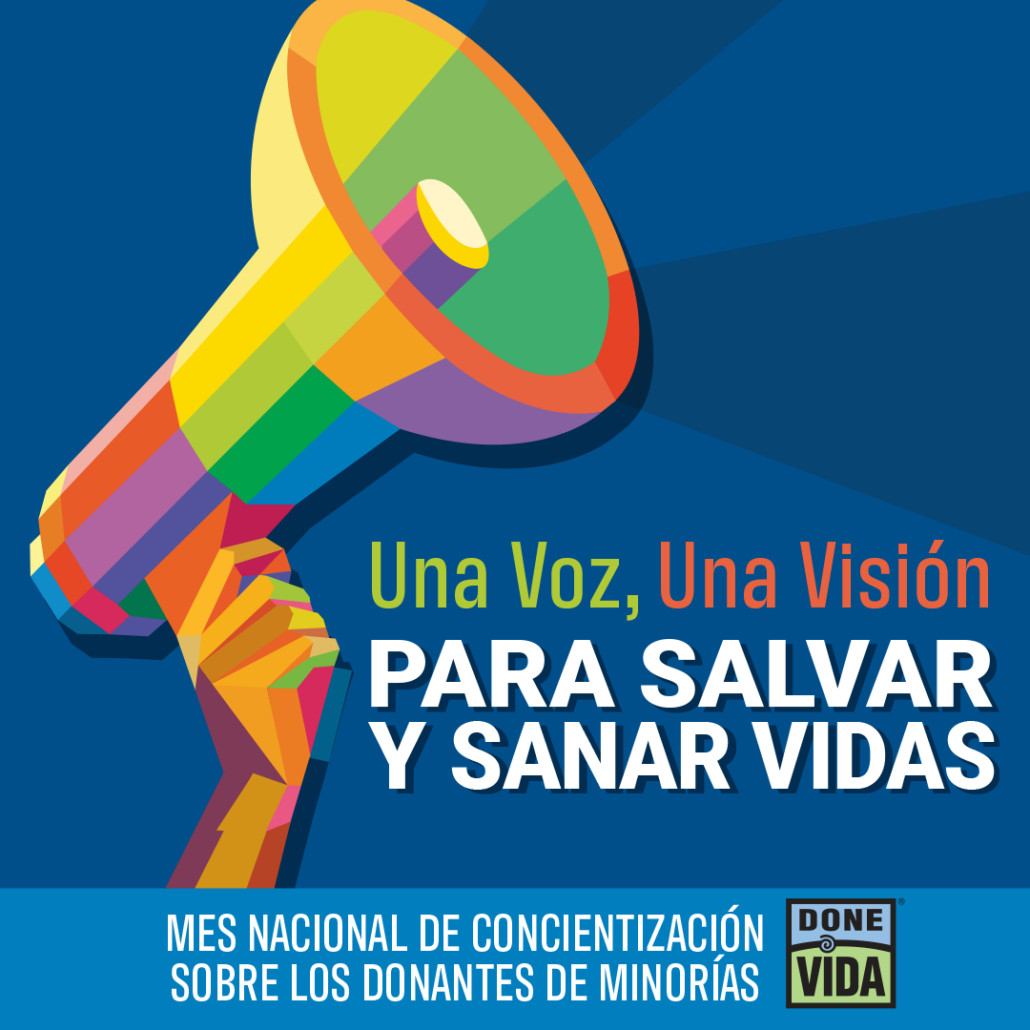
What is the history of National Minority Donor Awareness Month (NMDAM)?
National Minority Donor Awareness week first started in 1996, founded by the National Minority Organ Tissue Transplant Education Program.
As nmag1.org explains, NMDAM was expanded from a week-long observation to a month-long observation.
Today, NMDAM is made possible in collaboration with the National Organ, Eye, and Tissue Donation Multicultural Action Group (NMAG).

When is National Minority Donor Awareness Day?
Each year on August 1, we celebrate National Minority Donor Awareness Day.
Organizations like ours that support transplant families celebrate this awareness day in several ways:
–Raising awareness about minority organ donation and the associated need
–Sharing content centered on how minority organ donors change lives
-Advocating for greater health equity for minority and multicultural populations
Minority Donor Day kicks off a month-long celebration:
August is National Minority Donor Awareness Month.
Throughout the month, organizations and individuals impacted by the gift of life spread the word about the powerful impact of organ donors and the need for minority organ donation.

Why is minority organ donor awareness important?
Here are a few reasons why minority organ donation awareness is so important—learn more on this infographic and in our takeaways below.
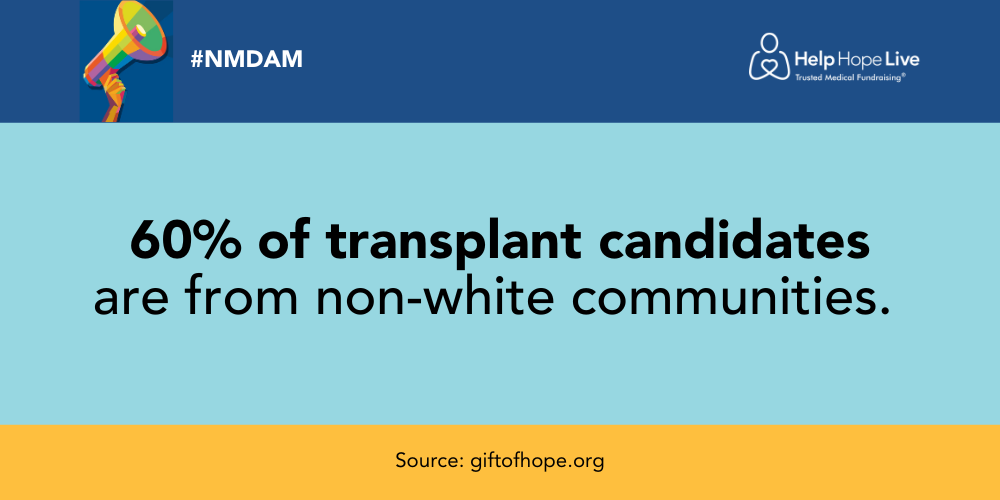
60% of transplant candidates are from non-white communities.
As of 2024, the organ transplant waiting list includes 27% Black Americans, 23% Hispanic or Latino Americans, 8% Asian or Pacific Islander Americans, under 1% American Indian or Alaska Native Americans, and under 1% Americans of multiracial descent.
Added together, these statistics mean that most individuals who are waiting for an organ transplant are non-white.
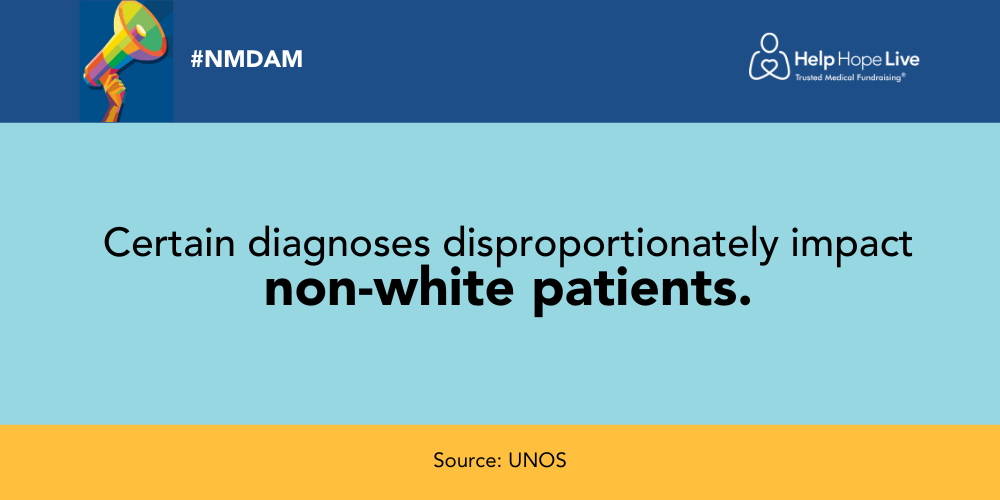
Many diagnoses that lead to a transplant disproportionately affect non-white Americans.
Rates of heart disease, high blood pressure, chronic illness, and diabetes are higher for non-white communities than for white communities.
In 2016, the United Network for Organ Sharing (UNOS) reported that Native Hawaiian or Pacific Islander Americans were 9.5 times more likely to experience kidney failure compared to white Americans.
Hispanic or Latino Americans were 50% more likely to experience kidney failure than white Americans.
Both Asian Americans and Hispanic or Latino Americans are more likely to be diagnosed with liver disease.
You may think that these higher diagnosis rates would mean higher transplant rates for these minority populations—after all, heart disease, kidney disease, and liver disease can all lead to an urgent transplant need.
The statistics below about minority organ transplants expose a different reality.
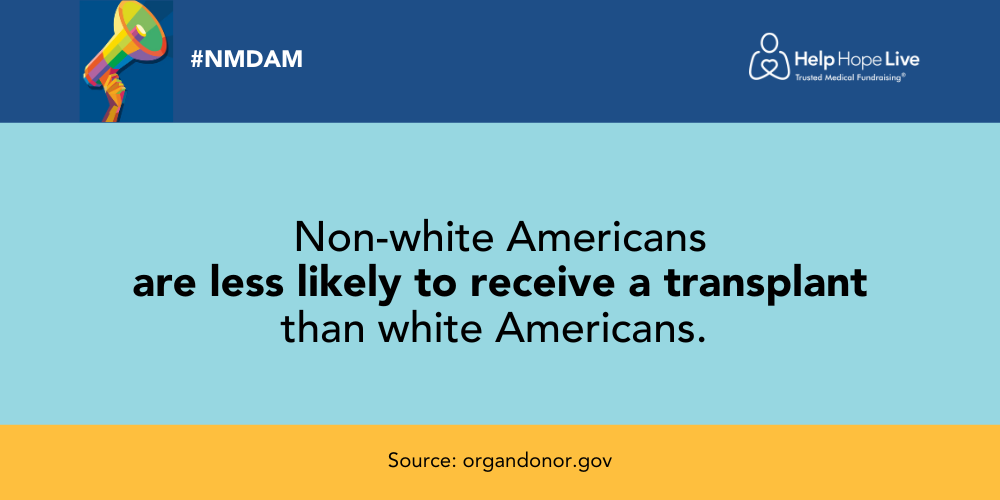
Non-white Americans are less likely to receive a transplant than white Americans.
More white Americans received a transplant than all non-white ethnic groups combined.
As of 2024, Black patients are 54% less likely to receive a transplant, 23% less likely to be referred for transplant, and 19% less likely to join the organ transplant waiting list compared to white patients.
Black patients are also 27% less likely to receive an LVAD as a bridge to a heart transplant compared to white patients.
As a 2020 report explained, there are multiple reasons why a non-white American is less likely than a white American to get a transplant, including:
-Disparities across race-inclusive algorithms and antiquated organ function tests, which can lead to white patients receiving a more “severe” diagnosis with identical health care statistics to a non-white patient.
-A patient not being able to receive information through bilingual materials and support. Language and literacy barriers and can stand in the way of a transplant.
-A patient’s medical team altering their treatment plans for a patient based on preconceptions or hidden biases based on race or ethnicity. One example of this trend is a medical team not offering transplantation as an option to certain patients because of ethnic or racial biases regarding that individual’s level of responsibility or their ability to financially support aftercare.
-A patient’s own negative prior experiences with a medical team. If a patient has experienced poor treatment or discrimination from a medical team in the past, those experiences may lead to the patient not trusting a future team’s recommendation to consider transplantation as an option.
Structural racism can impact not just a patient’s likelihood to get a transplant but also their post-transplant survival and outcomes.
For example, according to a 2021 study, young Black adults have double the risk of passing away after a heart transplant compared to young white adults.
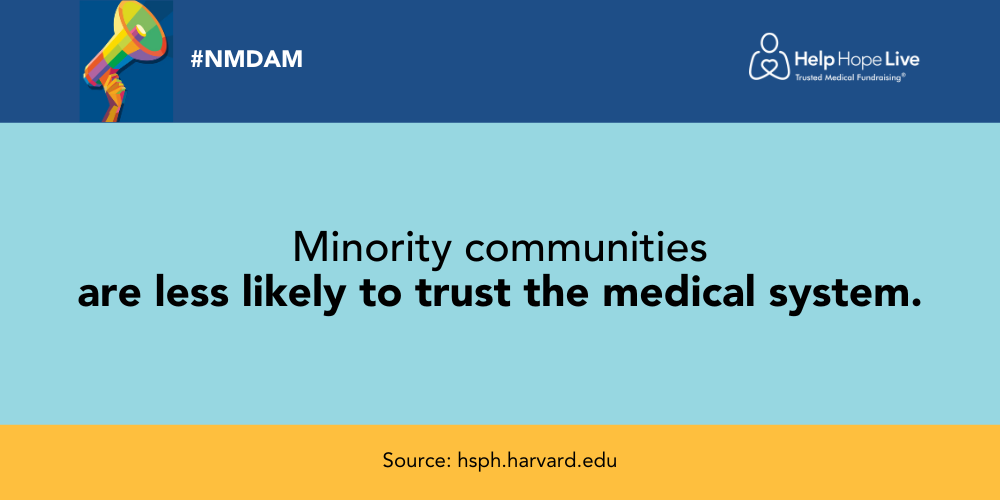
Minority communities are more likely to distrust the medical system.
Distrust of the medical system or a medical team can create a significant barrier to the gift of life—and according to a 2023 study, members of minority communities are far more likely to distrust the medical system.
The study population included women, people with disabilities, and members of the LGBTQIA+ community as well as individuals in ethnic minority communities.
Among individuals from ethnic minority groups:
69% reported having an experience that damaged their level of trust in the medical system.
For many individuals in these groups, distrust in the system comes not just from immediate experiences but also from multi-generational or institutional trauma and harm—including unfair treatment of family members, consistent lack of access to care and health literacy resources, and witnessing discriminatory treatment of non-white Americans across other areas of society.

Why is there a need for minority organ donors?
One important aspect of National Minority Donor Awareness Month (NMDAM) is recognizing that a greater need for organ transplants across minority ethnic groups also means a greater need for minority organ donors.
Here are a few reasons for that urgent need.
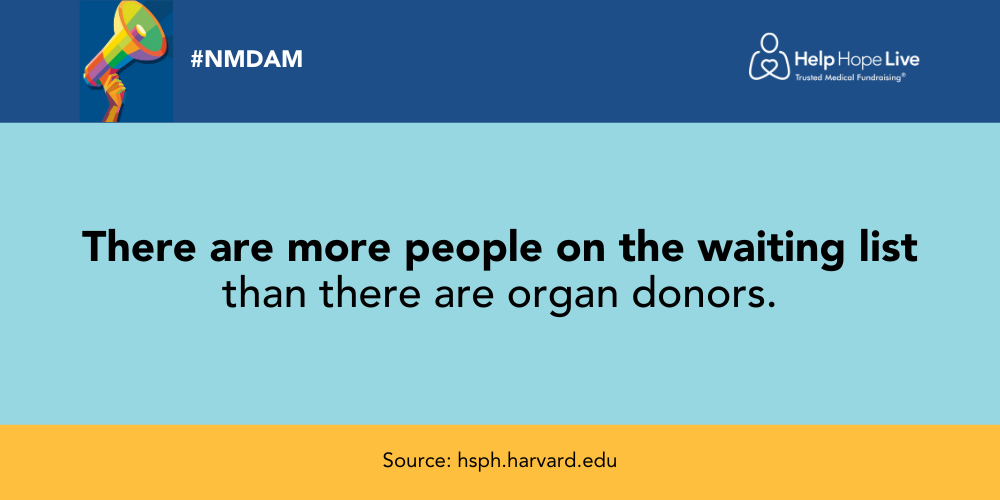
There are more individuals on the waiting list than organ donors.
As of 2022, there were over 106,000 individuals on the organ transplant waiting list. Every single day, individuals pass away while waiting for the gift of life.
Over 60% of the individuals on the organ transplant waiting list are non-white Americans.
While an ethnic or racial match is not required for a successful transplant, as we highlight below, a closer genetic match typically leads to better outcomes for transplant recipients.
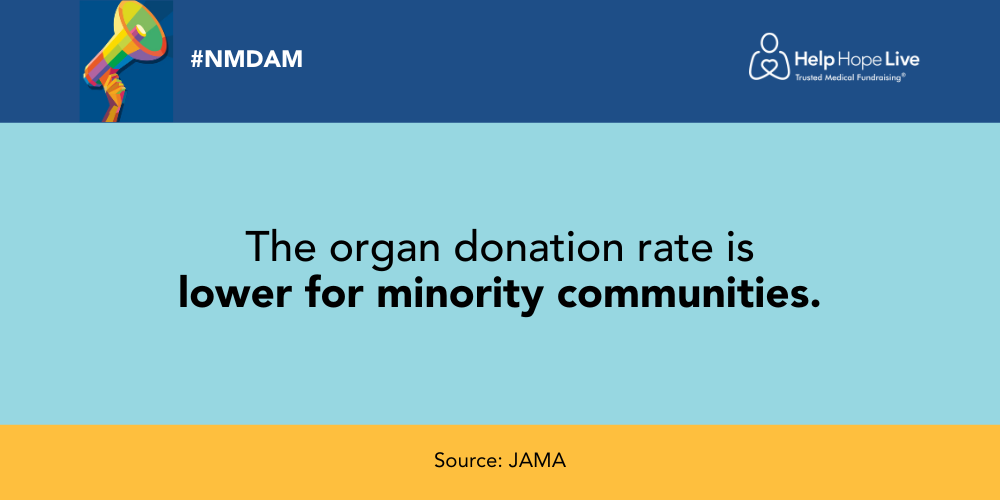
The organ donation rate is lower for minority communities.
Historically, the non-white American population has a lower rate of deceased organ donation than the white American population.
According to 2021 research, Black Americans and American Indian or Alaska Native populations are less likely to become organ donors compared to white Americans. Hispanic or Latino Americans have a 4% lower organ donation rate than non-Hispanic or Latino Americans.
This research indicates that historical trends still hold true today: due to a multitude of factors that include systemic racism, medical system distrust, and lack of information, Americans in minority groups are less likely to register as organ donors.
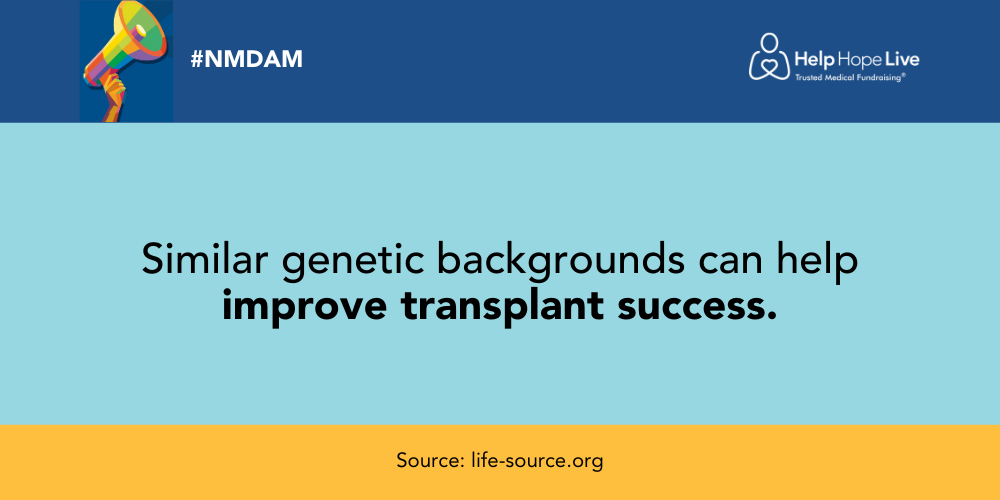
Organ donors and recipients with similar genetic backgrounds increase the odds of a transplant match.
A successful organ transplant does not require the transplant recipient to match the race or ethnicity of the organ donor.
However, as life-source.org explains:
The blood types and tissue markers are more likely to match when the recipient and donor share an ethnic group.
Having more non-white Americans as registered organ donors could improve the chances of a transplant candidate on the waiting list finding their match and receiving the gift of life.
Additional minority organ donations could also mean better long-term outcomes for minority transplant recipients.

Are there financial barriers to minority organ donation?
At Help Hope Live, we know how easily out-of-pocket organ transplant costs can stand in the way of both receiving a transplant and becoming a living organ donor.
However, it’s important to recognize that medical debt disproportionately impacts non-white Americans—which can lead to an additional barrier to minority organ donation and minority organ transplants.
2018 research found that:
Among US households with medical debt, 55% were non-white Americans.
Non-white Americans are also less likely to have health insurance to assist with costs and less likely to have savings to cover emergency medical expenses.
Our nonprofit can’t change the disproportionate medical debt burden on non-white Americans—but what we can do is extend our trusted medical fundraising support to as many patients as possible across America.
If you or someone you love is facing financial barriers to transplant, we want to help.
Apply today to receive one-on-one fundraising help for transplant medical expenses and related costs.
You can also access our hand-vetted Resource Directory for transplant families to find other sources of financial help and social support.









